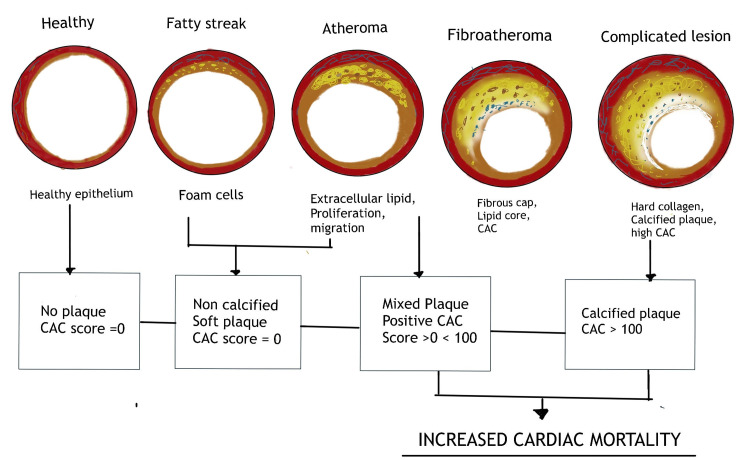Ref
. 2021 Dec 3;13(12):e20149. doi: 10.7759/cureus.20149
Coronary artery calcium score and coronary vascular Disease
Asymptomatic individuals with no associated risk factors and a calcium score of zero are highly unlikely to have any significant luminal obstruction or atheromatous plaque. They are also at very low risk of any cardiovascular events within the next two to five years [32]. Positive (non-zero) CAC scores, on the other hand, indicate the existence of coronary atherosclerotic plaque, and rising values are linked to increased coronary heart disease (CHD) risk (Figure 3) [33].

No comments:
Post a Comment